Melted turbine wheel?
#1
So after Laguna, my car started making a howling sound whenever it got into boost. After screwing around looking for a boost leak today, I pulled the turbo off and found this:
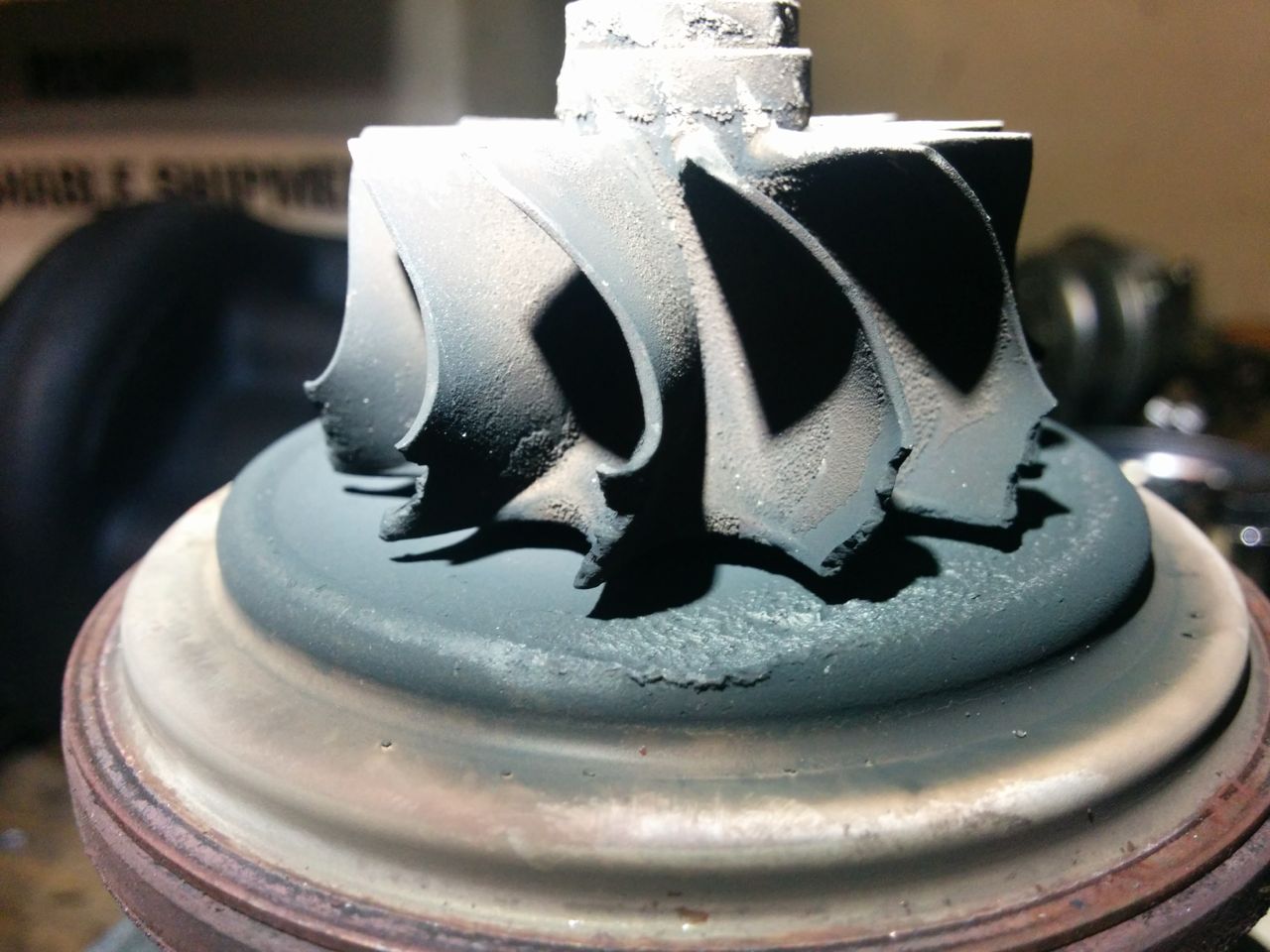
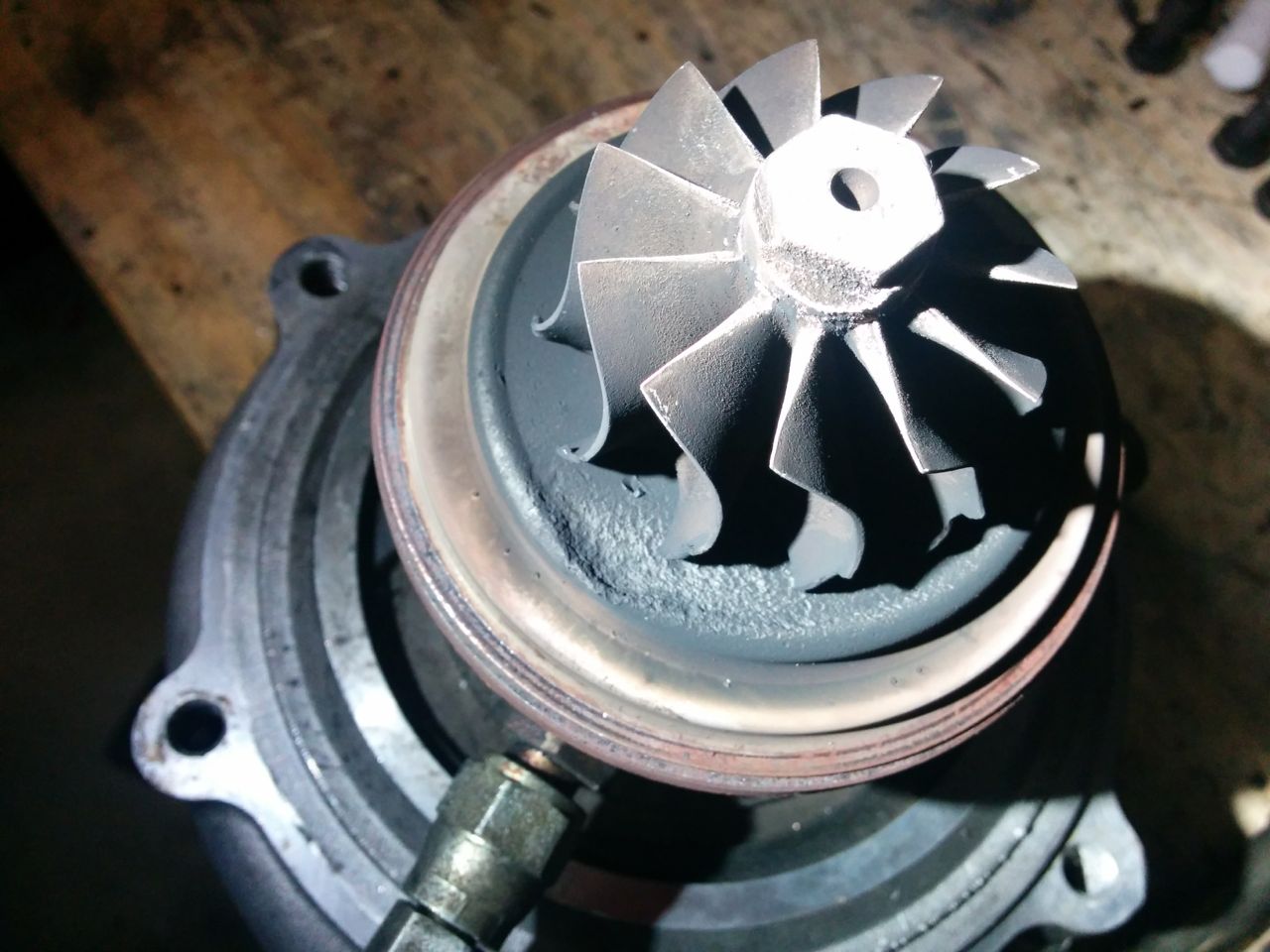
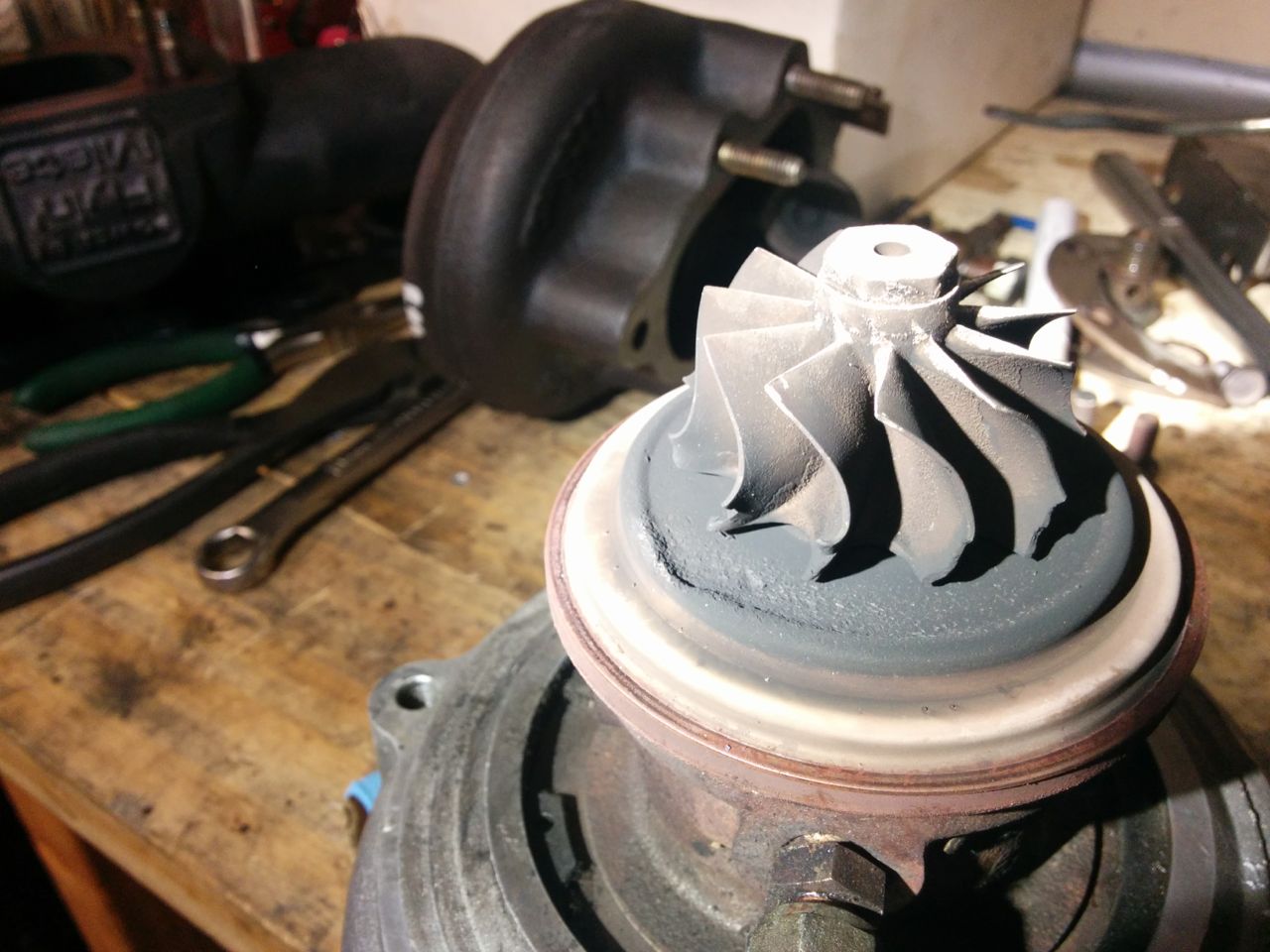
Oops. Definitely not a boost leak. The ends of the turbine blades are gone, they're chewed up and bent over, and there's some kind of pitting happening on the plate that the turbine wheel sits against. There isn't a much play in the turbo bearing, either axial or radial, and there's no evidence of it scraping on either housing.
So... why? What causes this kind of damage? Poking around at various other sites, it kind of looks like FOD, except I'm reasonably sure the engine hasn't ingested anything. I haven't pulled the head off to check for damage in there yet, but I did do a leakdown test and had 95% or better in all four cylinders.
Heat? The engine gets a steady diet of 95 octane, except when it's on the track where it gets straight 100. I'm running lots of timing, but it'll go all the way up to MBT without pinging. I'm in the process of switching from a Hydra 2.5 to a Reverant MS3, I've been having some issues and it was putting the Hydra back in for Laguna. After doing that, it was misfiring a lot (a LOT) when trying to get it running for the track. The Hydra turned out to be unhappy with the crank angle sensor, once replaced it ran fine. There was no howling before the track day. It's conceivable that the howling started on the track and I just didn't hear it with helmet on/etc, I dunno. It came home on the trailer and was making the howl the next time I drove it.
It's a 99, built bottom end (Carillo A beams, Supertech pistons), ported/polished head with +1mm intake valves, FM2 kit, 2560 turbo, FM 3 inch exhaust, making 270 at the wheels. The 2560 has about 60K miles on it, and probably 30 track days.
--Ian



Oops. Definitely not a boost leak. The ends of the turbine blades are gone, they're chewed up and bent over, and there's some kind of pitting happening on the plate that the turbine wheel sits against. There isn't a much play in the turbo bearing, either axial or radial, and there's no evidence of it scraping on either housing.
So... why? What causes this kind of damage? Poking around at various other sites, it kind of looks like FOD, except I'm reasonably sure the engine hasn't ingested anything. I haven't pulled the head off to check for damage in there yet, but I did do a leakdown test and had 95% or better in all four cylinders.
Heat? The engine gets a steady diet of 95 octane, except when it's on the track where it gets straight 100. I'm running lots of timing, but it'll go all the way up to MBT without pinging. I'm in the process of switching from a Hydra 2.5 to a Reverant MS3, I've been having some issues and it was putting the Hydra back in for Laguna. After doing that, it was misfiring a lot (a LOT) when trying to get it running for the track. The Hydra turned out to be unhappy with the crank angle sensor, once replaced it ran fine. There was no howling before the track day. It's conceivable that the howling started on the track and I just didn't hear it with helmet on/etc, I dunno. It came home on the trailer and was making the howl the next time I drove it.
It's a 99, built bottom end (Carillo A beams, Supertech pistons), ported/polished head with +1mm intake valves, FM2 kit, 2560 turbo, FM 3 inch exhaust, making 270 at the wheels. The 2560 has about 60K miles on it, and probably 30 track days.
--Ian
#2
I'd say the bend on the blade circled clearly indicates something passed through. I had the same thing happen. I assumed it was slag/scrap that broke loose inside my long tube manifold. After swapping EWG flanges I found more evidence internally that might have been the case. Lots of slop inside. Damage pic below looks like yours. JKav also suggested this was the cause. In aeronautical applications, Turbine Intake Temps are typically 1500-1600f, so a turbine wheel should be capable of withstanding temps above that. My peak TiT measure with a single EGT probe peaked at just over 1500f for only a brief moment- right before rev limit.



#9
Definitely FOD. Tearing down to look inside the motor I found this:

The infamous throttle body screw. I'd thought those were high-RPM failures, but I've always had my rev limiter set at the factory 7200, so apparently not.
I haven't quite pulled the head off yet, hopefully it's not too badly chewed up in there.
--Ian

The infamous throttle body screw. I'd thought those were high-RPM failures, but I've always had my rev limiter set at the factory 7200, so apparently not.
I haven't quite pulled the head off yet, hopefully it's not too badly chewed up in there.
--Ian
#16
AFAICT the shaft is fine, it's just that the screw head came off. The throttle still works fine, doesn't stick, idles at the normal level, etc. I had to specifically go look at it to know that it had failed.
Also, I lied about the rev limiter. I checked the Hydra settings, and it was at 7500, not 7200. Doh.
--Ian
Also, I lied about the rev limiter. I checked the Hydra settings, and it was at 7500, not 7200. Doh.
--Ian
#17
After breaking two 1.6 throttle shafts within 6 months I epoxied the throttle plate and screws to the shaft in the replacement TB and it has been fine for almost two years now. I was lucky not to have ingested a screw like yours did. The Skunk TB only fits the 1.8 so that wasn't an option for me.
#18
After breaking two 1.6 throttle shafts within 6 months I epoxied the throttle plate and screws to the shaft in the replacement TB and it has been fine for almost two years now. I was lucky not to have ingested a screw like yours did. The Skunk TB only fits the 1.8 so that wasn't an option for me.
#20
I pulled the motor out and took the head off this evening. Yes, the bolt went through the motor, apparently in two pieces. #4:

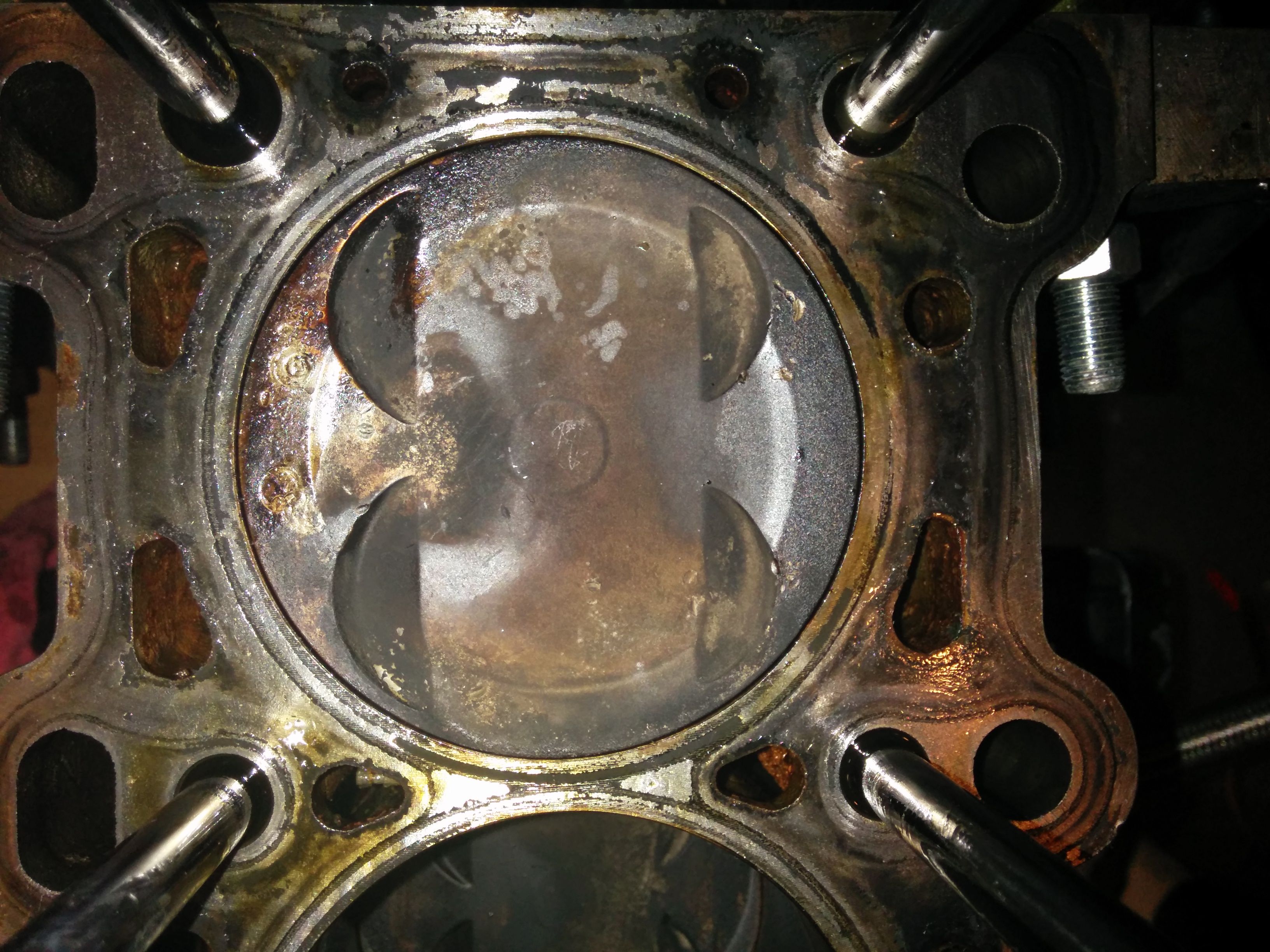
And #2:

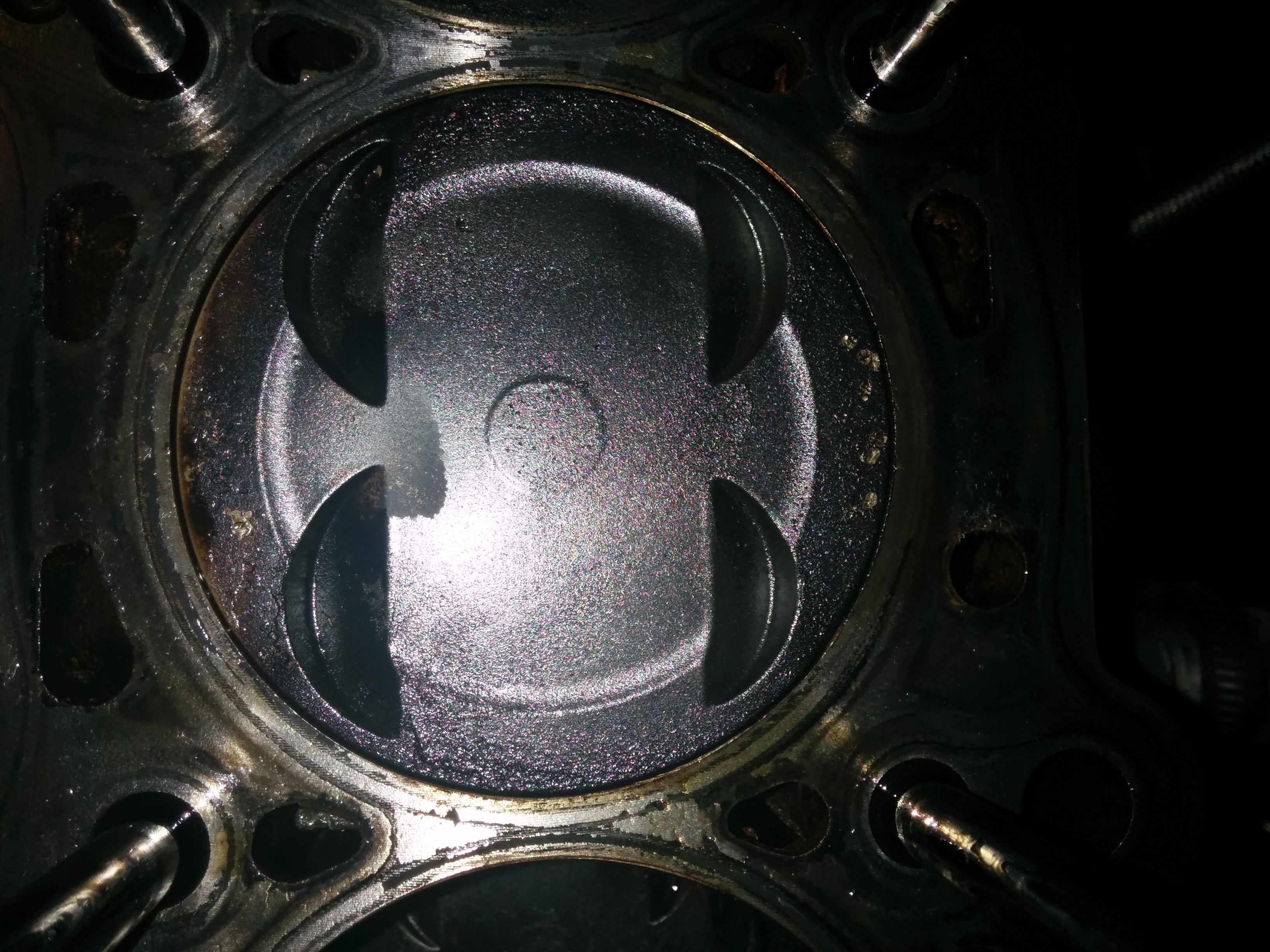
#4 you can see the imprint of the phillips head in the head, if you look closely. #2 appears to have imprints from threads.
Savington says that when it hits in the quench zone like that it hammers the snot out of the rod bearings, so I pulled the cap off #4 to look at it:
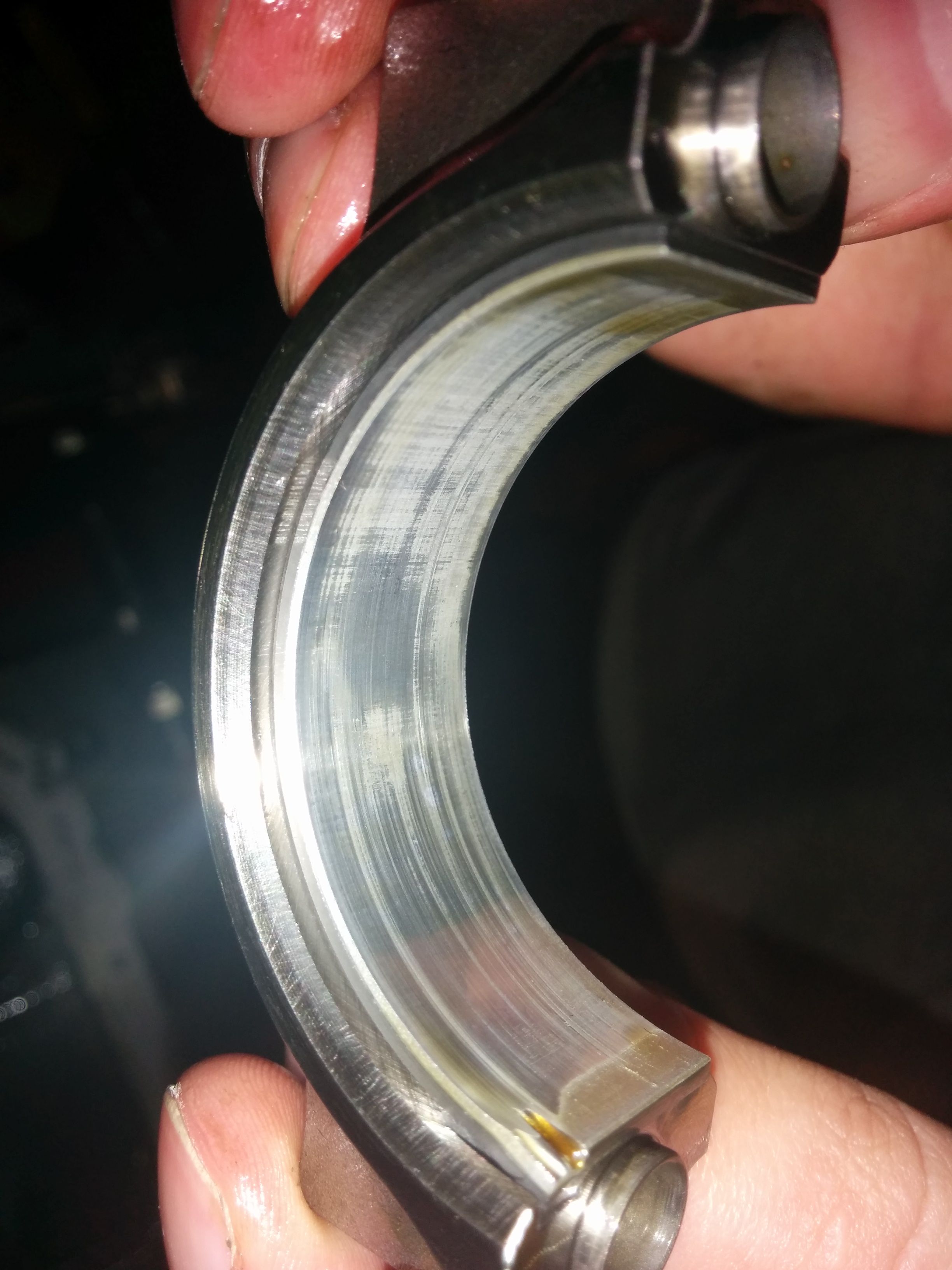
Random other things in the motor, a big gouge in #2:
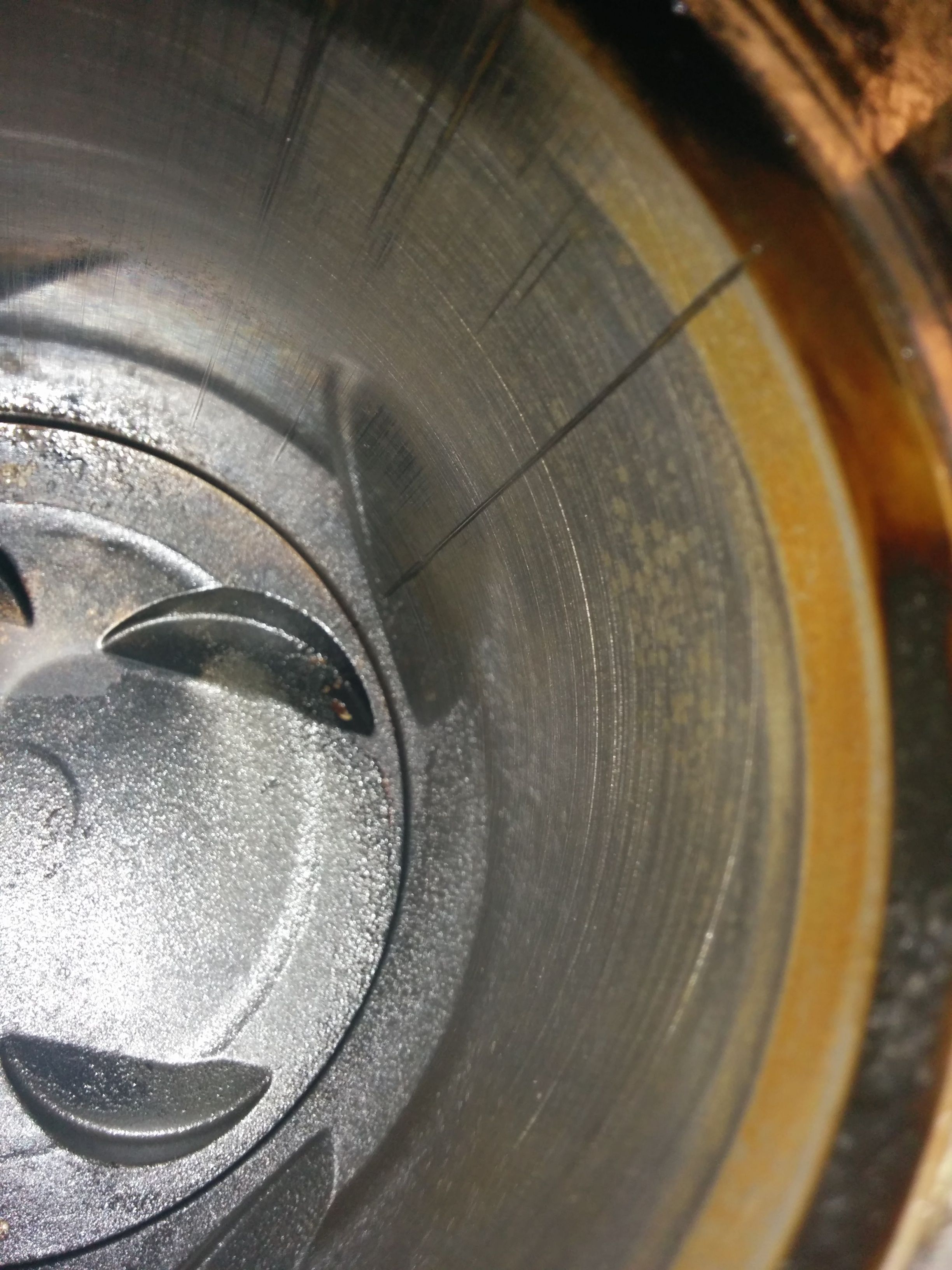
And scuffing on all four cylinders:
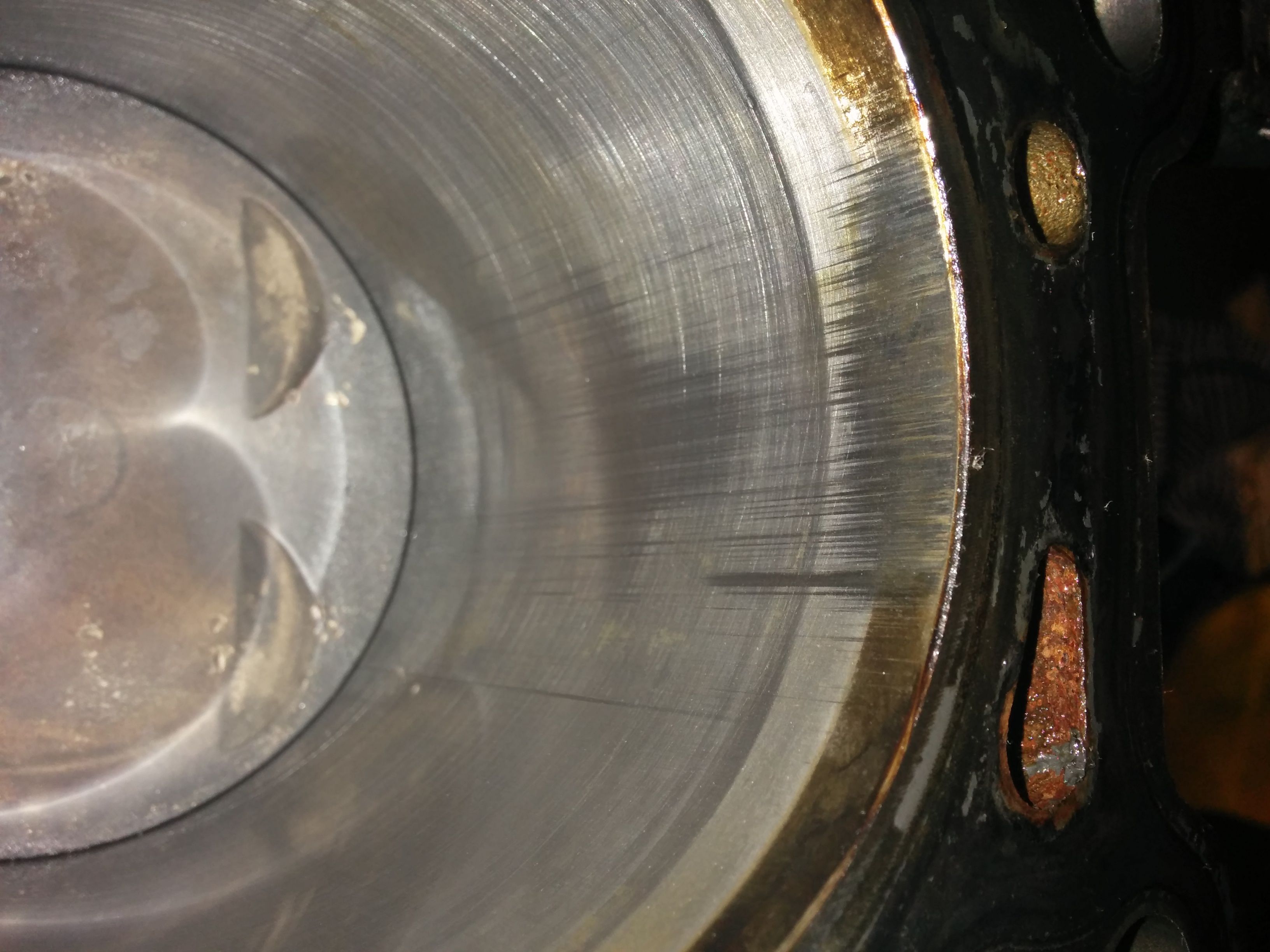
I'm surprised at the scuffing, the motor only has 10K miles on it.
Any thoughts on the damage? Are these parts salvageable, or is it all junk?
thanks,
--Ian


And #2:


#4 you can see the imprint of the phillips head in the head, if you look closely. #2 appears to have imprints from threads.
Savington says that when it hits in the quench zone like that it hammers the snot out of the rod bearings, so I pulled the cap off #4 to look at it:

Random other things in the motor, a big gouge in #2:

And scuffing on all four cylinders:

I'm surprised at the scuffing, the motor only has 10K miles on it.
Any thoughts on the damage? Are these parts salvageable, or is it all junk?
thanks,
--Ian













